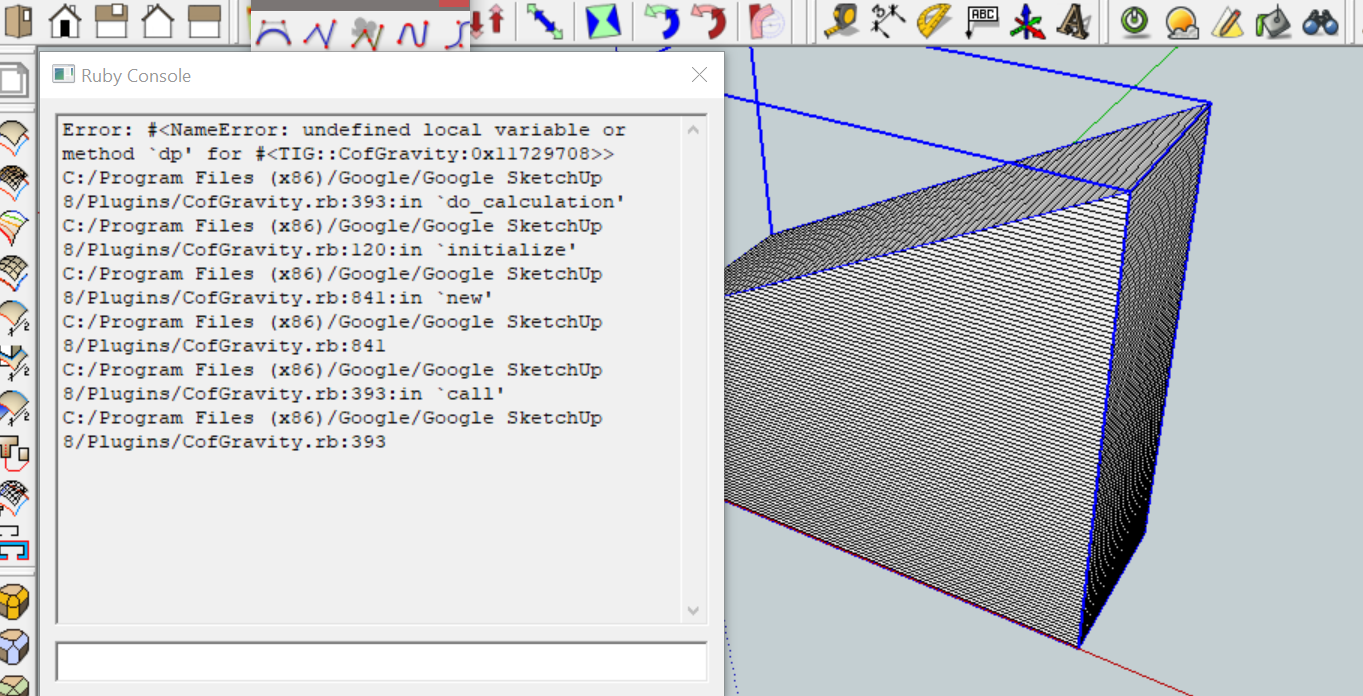Oops, your profile's looking a bit empty! To help us tailor your experience, please fill in key details like your SketchUp version, skill level, operating system, and more. Update and save your info on your profile page today!
⚠️ Important | Libfredo 15.6b introduces important bugfixes for Fredo's Extensions Update
[Plugin] Center of Gravity
-
@TIG said in [Plugin] Center of Gravity:
restart SketchUp and see if that helps...

Unfortunately it didn't help.
Robert
-
I missed some 'dp' variables [sorry]
line#393
changevolTxt = sprintf("%.#{dp}f", volume)to read
volTxt = sprintf("%.4f", volume)line#409
changeweight = (volume * @density).round(dp)to read
weight = (volume * @density.round)and line#417
changeweightTxt = sprintf("%.#{dp}f", weight)to read
weightTxt = sprintf("%.4f", weight)I think that's all of them !!
-

Works!
I am extremely grateful.
Thank you.Robert
Advertisement







